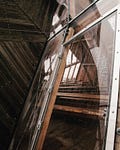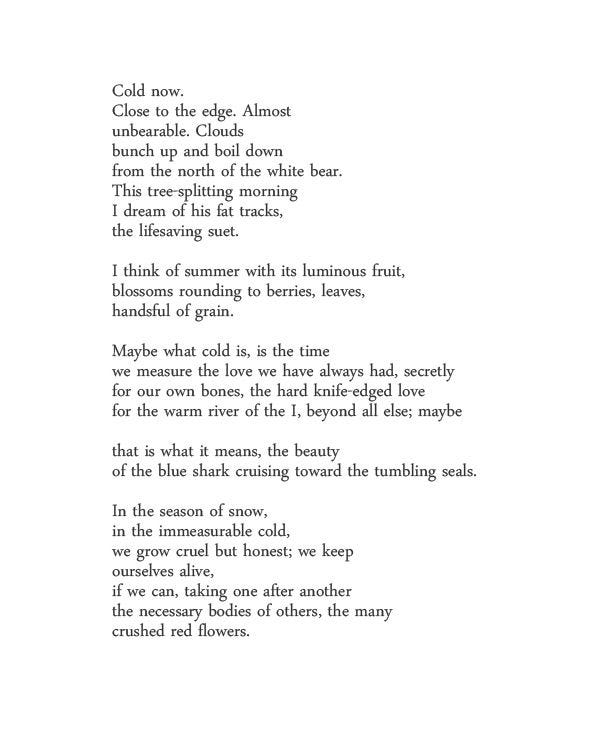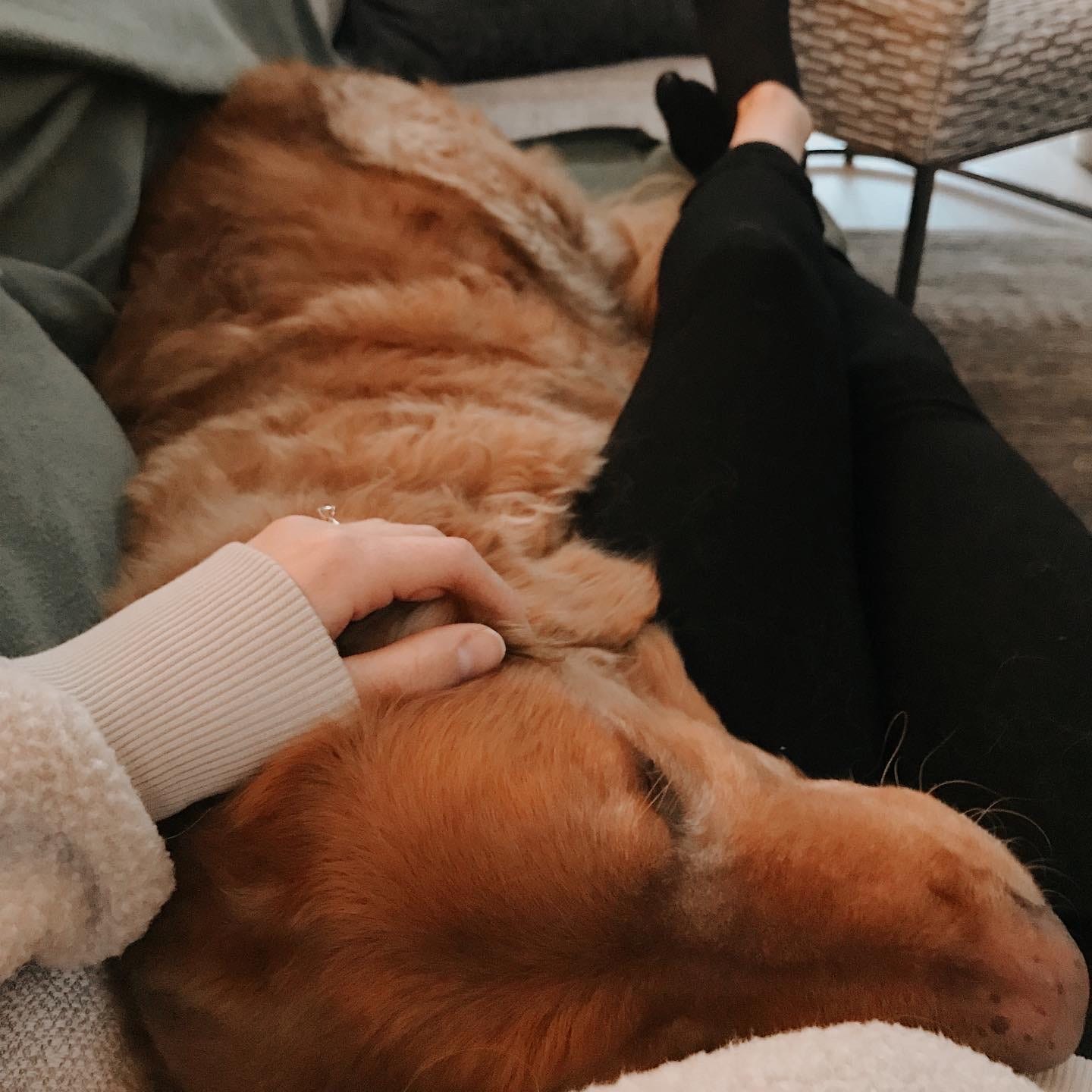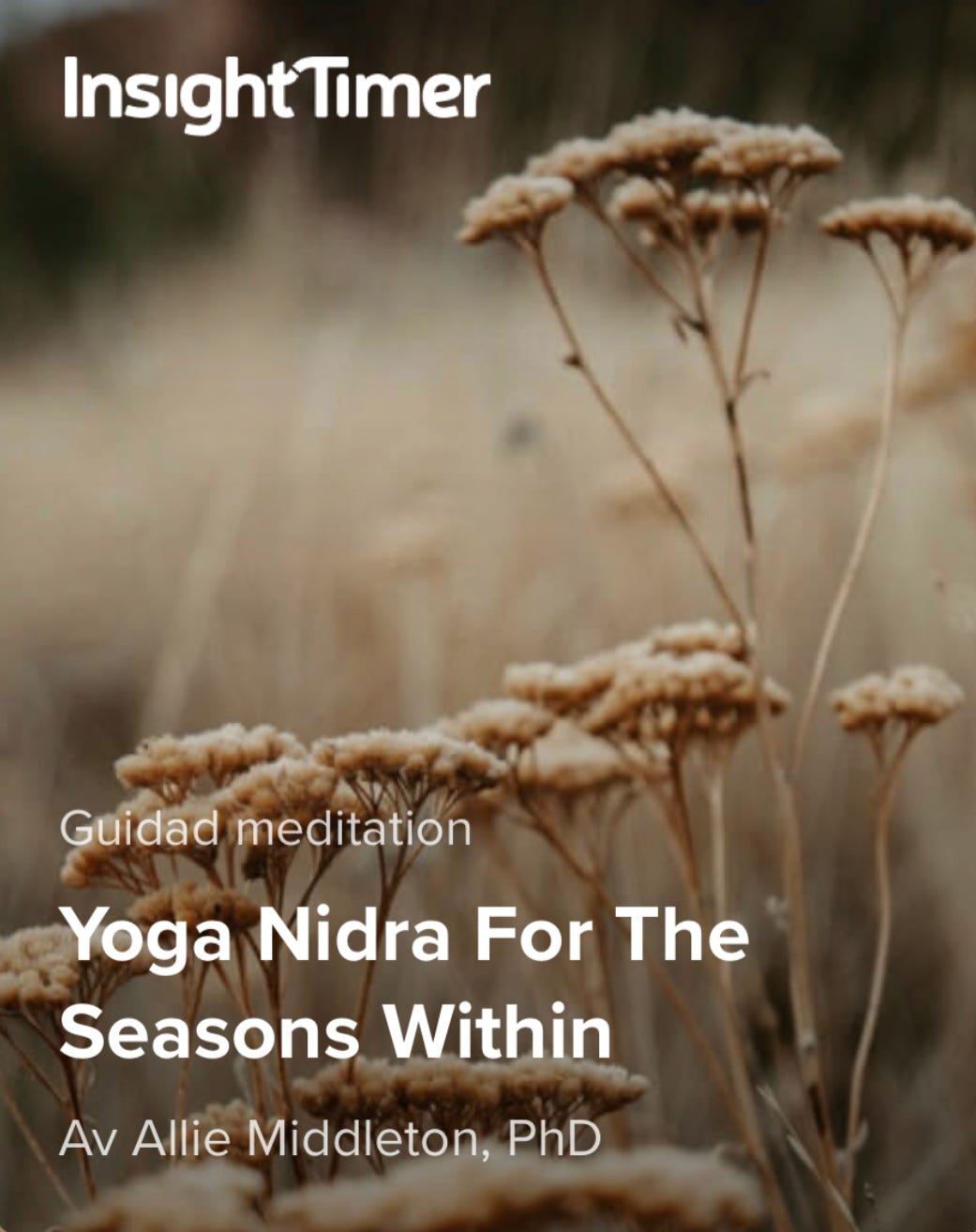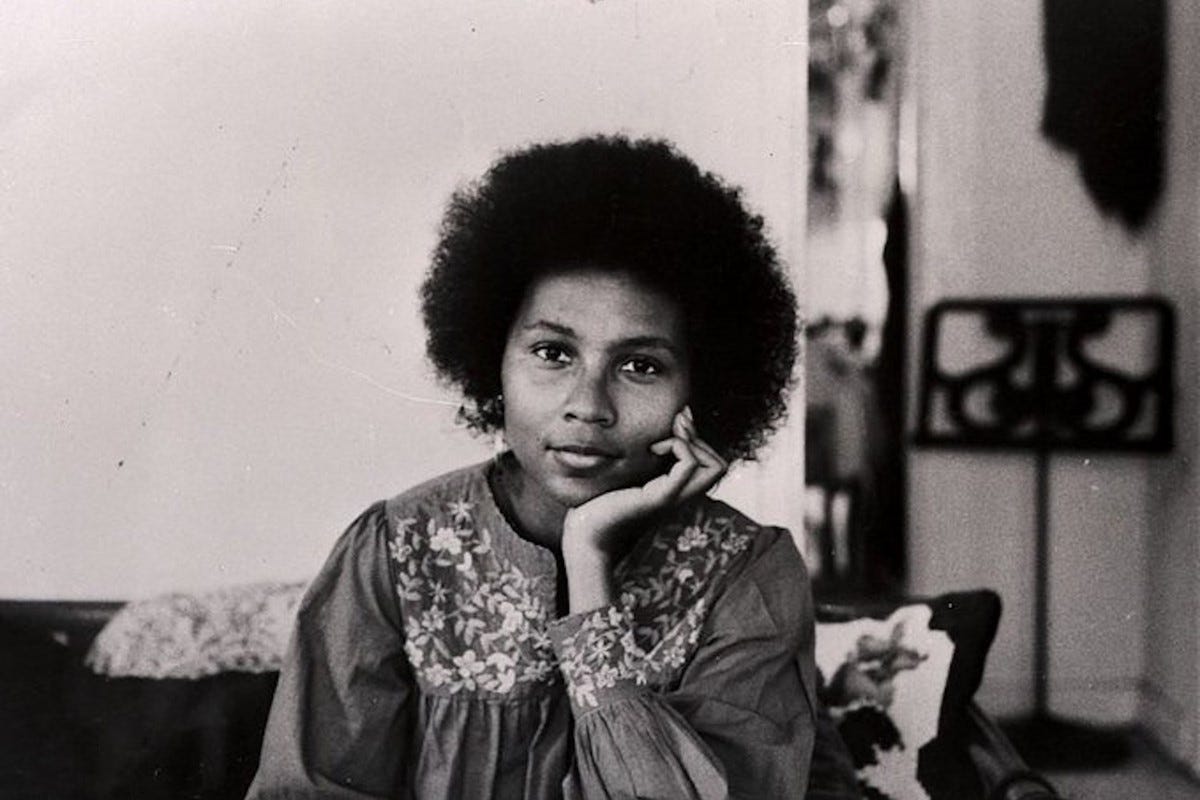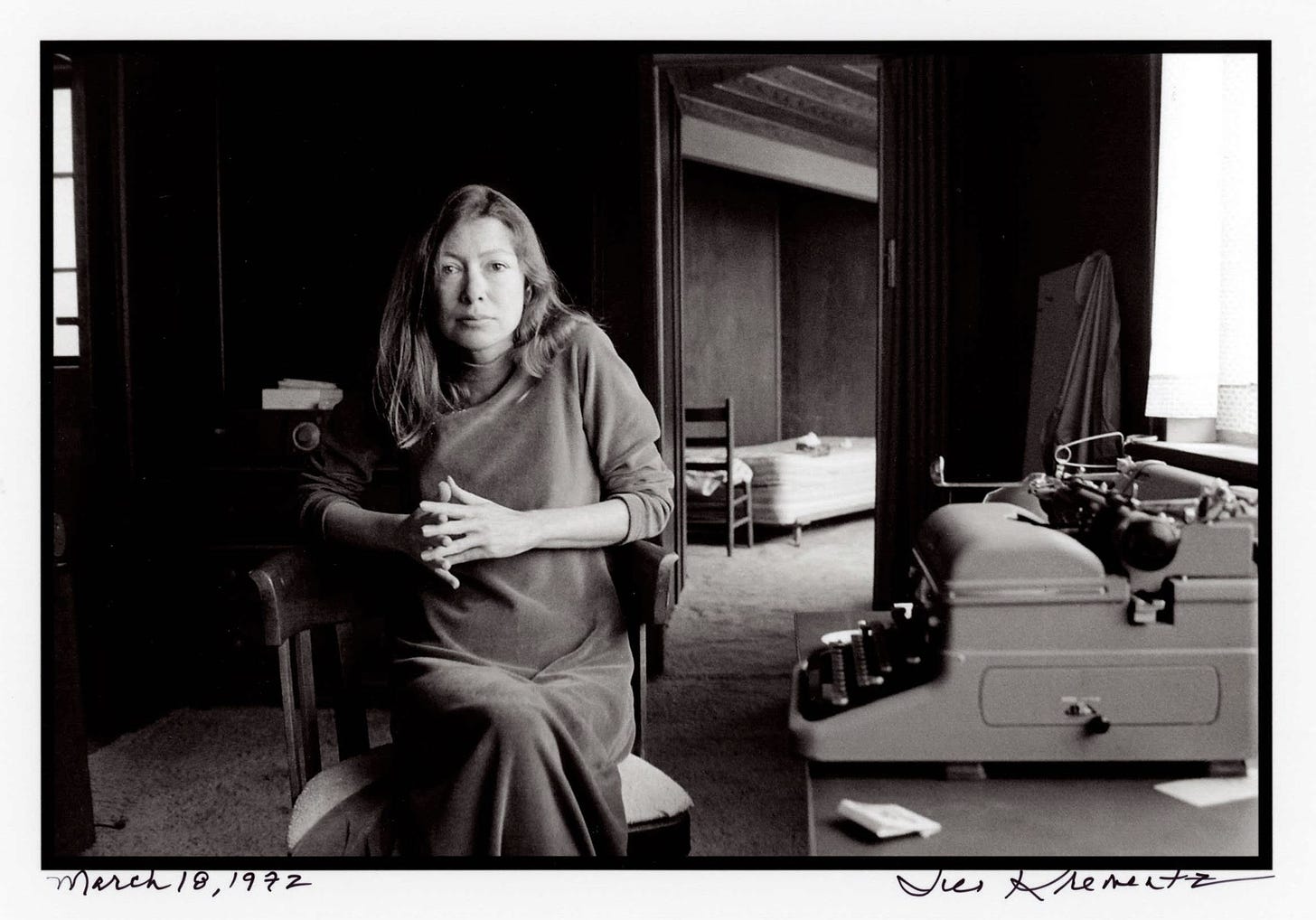weathering
on our relationships with structures; the work/identity quagmire; becoming your own structure; & building a softer scaffolding
Hello Friends,
A breath, a fallow pause, and a question I return to whenever I need anchoring:
How is the weather inside you?
The answer itself is often anything but anchoring. Still, I find the language weather patterns offer—foggy, frozen, tepid, humid, thunderous, sweltering—helpful, if only for the reminder that weather is impermanent.
I’m always skeptical of inner weather checks this time of year—is it me or is it winter?—a tidy way to avoid the fact that the two are inseparable: the winter is me. Swedish winter is unavoidable, inevitable. She has you sit with the dark corners of yourself longer than you’d like to. She asks you not only to be in winter, but to be winter.
Many of us are deeply exhausted and overwhelmed, in the way a fresh new calendar that says 2022 doesn’t erase. December’s writing prompt was to write what you’re remembering this season, with the idea that maybe a new year is not about relating to ourselves as frontiers of endless outward conquest (an internalized capitalism), but rather culling away acquired layers to return to an already-there core.
Here are a few of my own remembrances, which relate to this month’s ponderings:
you don't get to skip the dark, cold winter parts of you
you do not need to justify your exhaustion to admit to it
contorting yourself to fit the shapes you believe others expect of you (people-pleasing) only leaves you deflated and formless
the redeeming thing about being lost is that some day (not now) you'll look back and see the vast, winding distance you've been traversing all along
resistance can be a guidepost—though the direction it points may have nothing to do with its immediate object. where is yours pointing?
you’ve promised your path or trajectory to no one
you can go your own way
Seasons of depression have visited the house of me throughout my life, a less-frequent (and tidier) houseguest than anxiety (who has historically been more of a squatter). During a recent visit I can’t pin on just the Nordic winter or this ongoing post-PhD haze, I waded into an inquiry I wanted to share with you—in case you relate with it, in case we can open a discussion about how to build softer and more spacious scaffoldings inside these human houses of our bodies, of how can this possibly be enough.
You’ll find these musings below (after Mary Oliver offers a slicing interpretation of the cold). Further on you’ll find some links to what I’ve been thinking/learning/growing with lately, some WITHIN updates, and a midwinter embrace from me to you: a Yoga Nidra (meditation) for Weathering the Seasons Within.
As for the newsletter, you’ve likely caught on to this pattern in which I say I’ll write shorter issues from now on (and then don’t). Long(er)-form is my first-nature; it takes more energy to uproot than to surrender to, and energy is in short supply this season. I cycled through many off-piste topics to write you recently that lend themselves to micro-essays, which is to say you may hear smaller snippets more frequently from me here, although none of this is a promise. Still feeling out this space.
As always, thank you for being here; I know there are many places you can be. Beaming out a winter hug.
xx
A
cold poem, by Mary Oliver
structural relations
As social creatures we build relations with many things that are not just other people: flattened projections of people (~social media + parasocial relations), nonhuman beings, technologies, objects, mycelia.... Lately I’ve grown curious about relations deeply embedded in my own root network: with structures (and specifically: work).
I’m drawing a parallel between structures and work because besides family, work is one of the most pervasive structuring forces we exist within. Work also becomes a convenient if not distorting locus to talk about identity (see past issue The Work You Do, The Person You Are) and power. If the Great Resignation is any indication…the way we do (relate to, depend upon, are eroded by…) our work, particularly amidst intersecting crises, is weighing heavily on many of our bodyminds.
Feminist writer and independent scholar Sara Ahmed’s recent book Complaint!, along with her interview in The Paris Review about leaving academia, has me reflecting about the structure of the university and all it reproduces, what Ahmed calls institutional mechanisms, that foreclose certain kinds of change (or even survival) from within. [This applies to many institutions beyond the university.]
In examining the arduous process of filing a formal complaint against a university (cases of discrimination & harassment), Ahmed writes about how the structures a person has been interpellated in (embedded, internalized) become visible in new ways.
Transitions also make-visible structures you didn’t realize you’d been ascribing to (albeit often in less oppressive ways). As I transition into the academic system of another country, another context, another set of values (an anthropologist + resident of Sweden in a whole new way) I am seeing my relationship with institutions anew.
It feels funny to put this into words: that I’m processing (grieving? celebrating?) the end of a 6-year relationship with an institution, and by extension 10+ years with American academia (at least for now), despite complicated feelings and misgivings about both.
But really: I’m taking stock of what parts of my identity I was able to outsource to them, for all those years. And everything I took for granted, or didn’t see.
Those of us who have become fluent in shaping ourselves to mirror the expectations of others (aka people-pleasing) are familiar with the complicated relief of inheriting a roadmap, checkpoints, The Next Thing. Even if we also bristle and tousle with these.
High on the immediate aftermath of the PhD defense in October, I ran from my fatigue straight into The Next Thing (my postdoc). For awhile I outpaced her stride, this fatigue. But she has, ironically, more endurance, and finally eclipsed me in mid-December, when I was lucky to *not* have omicron thwart the chance to fold onto my parents’ couch in Oregon with my nearly-deaf 86-in-human-years-old dog, Cooper (who cares nothing about structures except for his morning walk and reminded me of the simple healings of touch and rest).
Finally not running allowed me to see the underbelly of all this on a personal level, what outsourcing to these external structures conveniently masked: the challenge of building a structure within oneself; of becoming one’s own structure, and trusting that structure to hold up to all the weather outside.
I find this so difficult because my internal conditions feel... unreachable.
In the past, my inner structure-building has ricocheted among extremes. After self-destructive perfectionism and submission to a culture of collective overwork in my early 20s, in grad school I built a bit of a shell of performed disaffectedness. I grew super private about my work rhythms + rest, and got really boundaried about my mental health and with whom I shared my doubts and dreams.
Those dreams are surfacing loudly now because they have a sliver of space to breathe, and they’re reminding me that they aren’t so sure there’s room for them to grow in the structures I’ve spent so much time outsourcing to.
I want to build a scaffolding to support them that doesn’t dissolve into a matrix of good/bad, success/failure, right/wrong. A softer structure that embraces wobble, rejects a scarcity model, where not every move needs to be calculated, where there is enough time and space to create and experiment.
I’m also thinking as an educator about how to offer micro-structures that support my students to do this themselves.
Katonah Yoga theory explores this concept of “fitting yourself” in the body through all kinds of “fits” that are all self-referential (vs. modelled off an external structure or ideal); i.e. the way your armpit fits like a mitt over your kneecap.
Maybe building this scaffolding isn’t also remembering all the ways it was there all along, rediscovering the inner fit, and deciding what to re-center at its bedrock: which may look and feel very different than the things we’ve willed ourselves to center.
I don’t have answers, I wish I did. I have observations, fieldnotes, questions. I’m not necessarily pessimistic (though my ambivalence often skews that flavor) and do have some incredible role models and mentors going their own way.
Structures weather. Some collapse. Breakdowns can be ironically formative. So many structures are wobbling around us and within us at this particular moment. I think the thing is to not mistake these (outer/inner structures) for one another; to maintain a sense of what is and isn’t inherited; and to build (or take down) from there.
What is your relationship to structure(s)? What structures are you noticing, existing within, (re)building inside yourself? What does a “softer scaffolding” mean or feel like to you?
a yoga nidra for weathering the seasons within:
Yoga Nidra is a meditation technique which probes the liminal borderland between wakefulness and sleep. This practice has been an immense support to me this fall and winter. I recently started uploading my recorded meditations on Insight Timer, which is a wonderful resource for free/donation-based meditation and mindfulness practices:
*you’ll also find my Yoga Nidra for Writing & Creativity on my teacher profile
resources + inspirations
reading with:
December was a mournful month in the literary world; we lost the greats bell hooks, Joan Didion, and Eve Babitz within days of each other. The Rumpus put together a list of “What to Read When Remembering…” these three defining writers.
This essay on design by bell hooks has deeply influenced my thinking about design and class and access and meaning…and an important reminder of how structures are not available to or experienced by people in even ways.
I’ve been really appreciating the nuanced tribute-criticisms written in the wake of the inimitable Joan Didion’s passing, including:
Zadie Smith on Didion in the New Yorker
(“you didn’t have to agree with her but you did have to submit to her sentences”)Hilton Als’ excellent profile on Didion (written prior to her passing)
thinking with:
Melissa Febos’ “The Horse is Me” on the body, chronic pain, recovery, and the erosion of collective care:
"We are all the horse. The horse is all of us. When you kick anyone (including the earth’s atmosphere), you are kicking yourself.”
A strategy for interacting with social media as running in and out of a burning building
Patchwork Ethnography: an effort to restructure how anthropologists approach the home/field dichotomy in the wake of the pandemic
listening with:
“The Way Out is In,” a podcast inspired by the late Thich Naht Hanh’s teachings with a focus on the crossroads of personal and systemic change
moving with:
Katonah Yoga & Dages Juvelier Keates’ Alchemical Conception
WITHIN updates & offerings:
WITHIN, my embodied writing + yoga series, is now available in a pre-recorded format to practice on your own time, at your own pace. I am also hosting monthly labs (workshops). The 12-week course returns in September 2022.
Did this issue of T H E | L I M I N A L resonate with you, or might it land with someone in your orbit? You can share a screenshot of any portion on social media tagging @liminalliety, or use the button below to share.
T H E | L I M I N A L is a reader-supported publication and community. To support my work and labor of love, consider becoming a free or paid subscriber.


